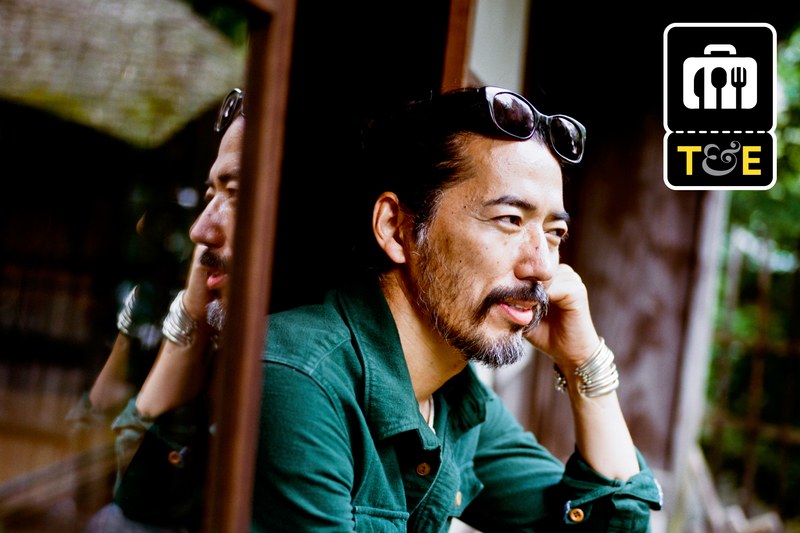Visvim designer favorite places for vintage goods and world-class sushi.
Designer Hiroki Nakamura sits on the sofa in a pop-up store in New York City from September to December, with oat mats placed in front of a black walnut coffee table. Both pieces were produced by the late legendary Japanese-American woodworker George Nakashima. He integrated the Japanese joinery and shaker and modern style into his work and created the “edge of freedom”. Nakajima’s memoirs are called the “soul of the tree” about the terms of his material, and sit at the coffee table, and you can also feel its soul.
“Why does this table talk to me?” asks Nakamura, the philosopher designer of the evil Japanese workwear brand Visvim. “I want to find out.” This is a question – why some items have spiritual power and other items are not – he has been pondering because he is a teenager looking for quaint Americans in Tokyo, which is a way of looking at him and Island sharing wholesale Christmas costumes. Like Nakajima, he also attracted a cross-continental influence for his clothing line: blending Native American and Old West emotions with Japanese traditional textiles and work clothes.
Seeing works from Nakajima is also exhibited at the Metropolitan Museum of Art, which is curious in a temporary retail space where scattered white display cases are more typical. However, Nakamura’s method of selling clothing is rare.
Before the past year, this 18-year-old brand had no independent store outside of Japan and now has seven stores. Last July, Nakamura first introduced his first American store in all locations in New Mexico, its signature tasseled “FBT” moccasins sneakers, indigo denim and nylon kimono jackets. “I love Santa Fe, all the craft, all the culture. I want to start with things that are not so commercial,” said Nakamura, when asked why he did not start his international expansion in a larger American city. . “I still need to contact my soul. This is one thing, but I don’t want to forget where I started. If I forget, my product will lose its soul. Do you know what I mean?”
The essence of Nakamura’s costume affection is to attract fanatic collectors like Kanye West, Eric Clapton, and John Mayer. It is reported that they have almost nothing else. Nakamura is well-known for purchasing the world’s highest-grade cotton, Egyptian Giza and other materials, and uses old world technology to create brand new wholesale Christmas costumes. He is particularly passionate about everyday craftsmanship. “In Japan between the 1920s and the 1960s, there was a large-scale manual movement, Mingei movement,” Nakamura said. “I was inspired by that movement. For some reason, I like things designed for a certain purpose. I think those things are also pretty. They have a reality.”
Considering the focus on craftsmanship and quality, we asked Nakamura where he went shopping, eating, and inspiration in Japan. This is his favorite.
Every time Nakamura returns to Japan, he avoids the mad summer in winter, spring or autumn – he tries to catch up with the large flea market in Toji-ji Temple in Kyoto on the 21st of each month. If you are accustomed to entering a parking flea market with a pile of tattered plastic decorations, this is quite another matter. The history of Toan Temple can be traced back to the Heian era of the 700s. It is a UNESCO World Heritage Site and its atmosphere is not as rubbish as an antique treasure hunt. “Most of the vendors are selling old-fashioned Japanese dishes, something Minge,” Nakamura said, pointing at him behind his large paper koi. “You can find such papers, koi and old kimonos or pretty handmade bags made of vines.” There are iron teapots, figurines and boro (patches indigo textiles), plus because it is Japan, There are many food suppliers as well.
Now that Nakamura has split between Los Angeles and Tokyo for some time, he no longer pursues the United States in Asia as Japan does, but encourages travelers to do so. “In the 1980s and early 1990s, American wines were popular, so many American work clothes, denim, leather jackets, and motorcycles all went to Japan,” he said. This means if you are an American retro collector – if you are, you probably already know – in the shops like Hinoya and Sunhouse in Tokyo, the best place to save the best specimens is actually Japan. There are also many small stores, as well as bi-annual antique carnivals held in January and August, showing a mix of American, European and Japanese merchandise.
When I was shopping at Nakamura elsewhere corset skirts sets , he continued to return to the Toji flea market and many of his suppliers. But for those who do not meet the big market for vacation time, he suggests Takumi Craft Shop near Ginza in Tokyo. “When you go to a Japanese antique shop, you can find things like miso soup bowls starting at $5.
